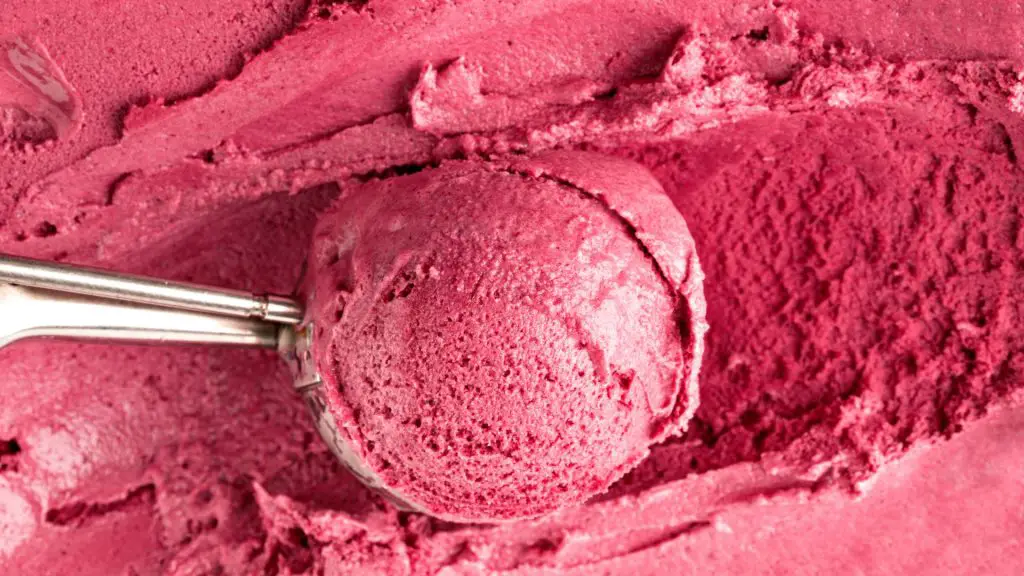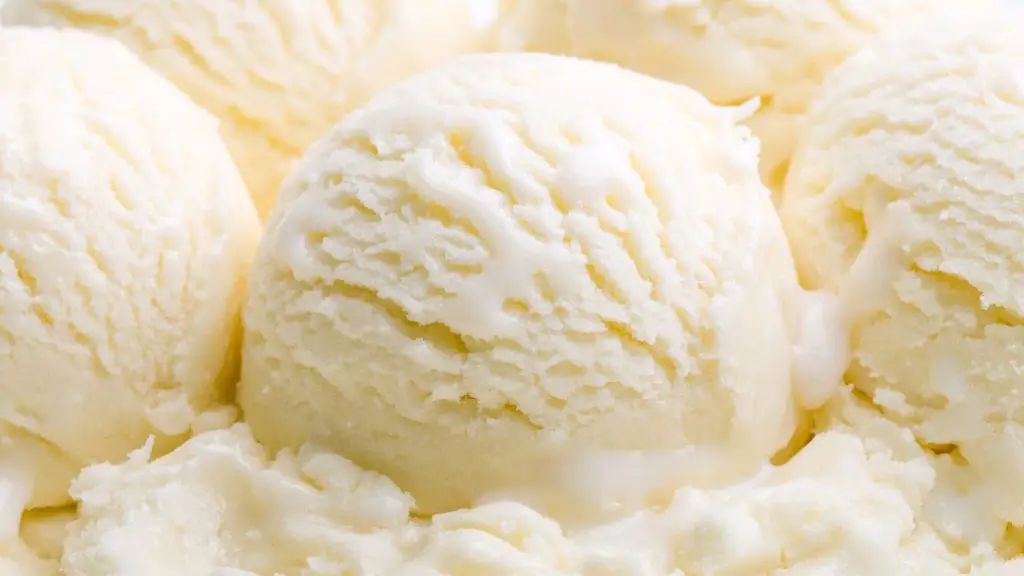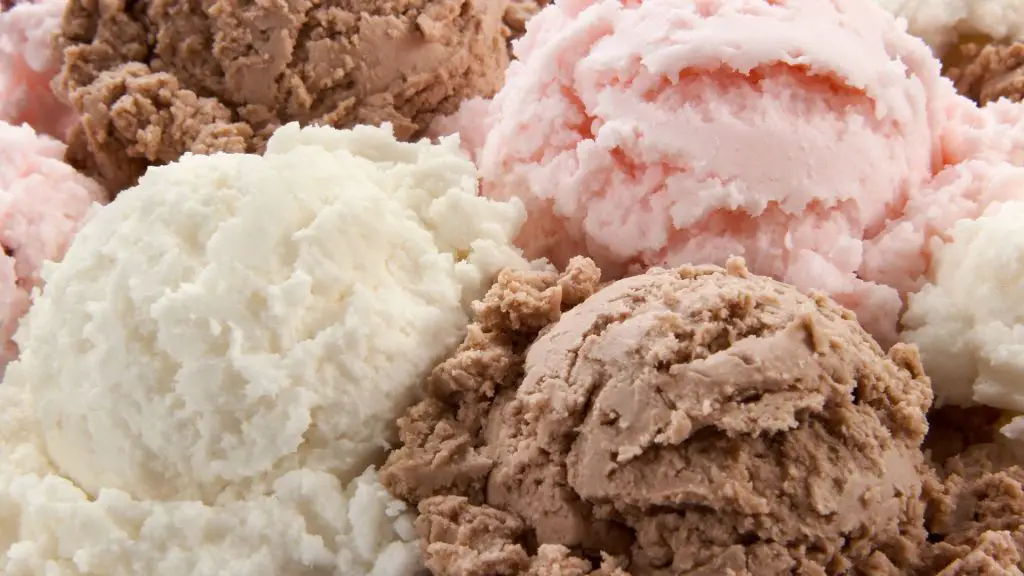Few things in life bring as much delight as a scoop of ice cream on a scorching summer day or as a comforting treat during the depths of winter. Ice cream transcends age, culture, and preference, uniting us all in a shared love for its creamy, sweet, and often whimsical flavors. It’s the quintessential dessert, capable of turning an ordinary moment into a special one. But can you refreeze ice cream?
Despite our deep affection for ice cream, there are moments when the unthinkable happens: our beloved frozen dessert starts to melt. The transition from solid to liquid can be disheartening, whether it’s due to a forgotten pint left on the kitchen counter, a leisurely stroll on a hot day, or an unexpected power outage. We face a puddle of creaminess and the question of what to do next.
This article embarks on a journey to answer that question and many others related to the curious phenomenon of refreezing ice cream. Is it safe to refreeze melted ice cream? Can you still enjoy its flavor and texture after it’s been subjected to the thaw-refreeze cycle? By delving into the science, safety considerations, and expert insights, we aim to unravel the mysteries and misconceptions surrounding this frozen delight. So, whether you’re a fervent ice cream enthusiast or want to avoid waste, join us as we explore the science and practicality of refreezing ice cream.
Understanding the Science Behind Ice Cream Freezing

The secret to that creamy, indulgent texture in ice cream lies in the intricate dance of ice crystals. When ice cream is initially frozen, it undergoes a complex process where tiny ice crystals are formed. These ice crystals play a pivotal role in the dessert’s mouthfeel. Smaller crystals create a smoother, velvety texture, while larger crystals can make it grainy and less appealing.
Ice cream perfection is more than just freezing milk and sugar. It involves a meticulous interplay of ingredients and processes. Fat content, sugar concentration, and the presence of stabilizers and emulsifiers all influence the final product. Moreover, storage conditions and temperature fluctuations can drastically affect quality. These factors, coupled with the rate of freezing and churning, contribute to your ice cream’s taste, creaminess, and overall sensory experience.
The initial freezing of ice cream is not just a technicality; it’s a crucial phase. During this stage, the base mixture transforms into the delectable dessert we adore. Proper temperature control during this process ensures the formation of tiny, desirable ice crystals, which gives ice cream its signature creaminess. It’s also when flavor infusions, like vanilla or chocolate chips, become locked into the matrix, enhancing the taste. Understanding the significance of this initial freezing process sheds light on why maintaining the integrity of ice cream, especially after it has melted, becomes challenging.
Can You Refreeze Melted Ice Cream?

Understanding whether refreezing melted ice cream is viable refreezing grasping the fundamental principles of how ice cream melts. Ice cream is a delicately balanced water, fat, sugar, and air system. When exposed to higher temperatures, this equilibrium is disrupted. The heat causes the ice crystals to melt, transitioning the dessert from solid to liquid. Consequently, the texture and structure of the ice cream are altered, leading to the familiar puddle in your bowl.
Temperature fluctuations significantly affect the structural changes when ice cream melts. The rate at which it melts and the temperature at which it re-freezes is critical. Rapid melting and refreezing can lead to the formation of larger ice crystals, potentially resulting in a gritty texture. Underrefreezing effects are essential in determining whether the ice cream can be salvaged and enjoyed in its refrozen state.
Partial melting is common, especially when transporting or serving ice cream. Threfrozenon arises: can partially melted ice cream be refrozen without compromising its quality? Addressing this query requires consideration of factors like the degree of melting, the time spent at higher refrozenures, and the original quality of the ice cream.
Beyond the texture and taste, there are safety concerns related to refreezing melted ice cream. Bacterial growth is paramount when perishable dairy products are exposed to temperature fluctuations. We delve into the guidelines food retailers and experts provided to understand how to safely handle melted ice cream. Balancing the desire to save your beloved dessert with health considerations is critical in deciding whether to refreeze it.
Can You Refreeze Unopened Melted Ice Cream?

Before diving into the complexities of refreezing unopened melted ice cream, assessing its condition is crucial. Unopened containers may have some advantages regarding refreezing, as they’re less exposed to contaminants. We explore the state of unopened melted ice cream and how it differs from its opened counterpart. This analysis sets the stage for evaluating the feasibility of refreezing.
Bacterial growth is one of the foremost concerns when dealing with any melted dairy product, including unopened ice cream. As the temperature rises and falls, bacteria can multiply rapidly, potentially leading to foodborne illnesses. We delve into the microbiological risks of unopened melted ice cream and examine the conditions that promote or hinder bacterial proliferation.
To make informed decisions about refreezing unopened melted ice cream, it’s essential to consider the guidance provided by food safety organizations. These organizations offer recommendations and best practices to minimize health risks while maximizing the quality of frozen foods. We explore the specific guidelines for refreezing unopened ice cream and how they align with consumer expectations.
Refreezing unopened melted ice cream involves a delicate balancing act between preserving quality and ensuring safety. We weigh the potential loss of texture and flavor against the risks associated with bacterial contamination. Drawing from expert opinions and real-world experiences, we provide insights into making the most prudent decisions when faced with unopened melted ice cream, ultimately empowering consumers to enjoy their frozen treats responsibly.
Can You Eat Ice Cream That Is Refrozen?

Refreezing ice cream can significantly impact its texture and flavor. Ice crystals may grow more extensive during the second freeze, resulting in a potentially icier and less creamy consistency. Flavor compounds can also be affected, leading to subtle alterations in taste. We delve into these changes and what they mean for the overall eating experience when consuming refrozen ice cream.
Safety is a paramount concern when considering whether to eat refrozen ice cream. The thawing and refreezing can create an environment conducive to microbial growth, potentially leading to foodborne illnesses. We explore the health risks associated with refrozen ice cream, considering the conditions under which it was stored, the duration of thawing, and the presence of preservatives or stabilizers.
Consumer experiences offer valuable insights into the practicality and palatability of refrozen ice cream. We collect anecdotes and stories from individuals who have ventured to enjoy ice cream after it has gone through the thaw-refreeze cycle. Their experiences, both positive and negative, provide a real-world perspective on the feasibility of consuming refrozen ice cream.
We seek expert opinions from food scientists, chefs, and culinary professionals to provide a well-rounded view. These experts offer informed perspectives on whether refrozen ice cream can be safely eaten and how to mitigate potential quality and safety issues. Their insights provide valuable guidance for consumers considering indulging in their refrozen dessert.
By examining texture and flavor changes, assessing microbial risks, considering consumer experiences, and seeking expert opinions, we aim to comprehensively understand whether refrozen ice cream can be a viable and enjoyable option for ice cream enthusiasts.
Best Practices for Dealing with Melted Ice Cream

Prevention is often the best strategy when it comes to preserving the quality of your ice cream. We explore tips and techniques for preventing ice cream from melting prematurely, including proper storage, transportation, and serving practices. These proactive measures can help you enjoy your frozen treat without facing the dilemma of refreezing.
In scenarios where ice cream has started to melt but hasn’t reached a completely liquid state, swift action is critical. We outline steps to salvage partially melted ice cream, such as repositioning it in the freezer or using quick chilling methods. These techniques can help restore the dessert’s texture and flavor.
Knowing when to let go and when to rescue your ice cream is essential. We provide guidance on assessing the state of melted ice cream, considering factors like temperature, time spent melting, and visible changes in texture and appearance. Understanding the extent of the melting helps you make informed decisions about whether to refreeze or repurpose it.
If you decide to refreeze melted ice cream, it’s crucial to do so with quality preservation in mind. We share methods and techniques for refreezing that minimize the growth of large ice crystals, which can degrade texture. Additionally, we explore creative ways to enhance the flavor and texture of refrozen ice cream, ensuring it remains a delightful treat.
By following these best practices, you can enjoy your ice cream while minimizing waste and maintaining its quality, whether it’s preventing melting in the first place, rescuing partially melted ice cream, assessing its condition, or refreezing to preserve its deliciousness.
Creative Solutions for Excess Melted Ice Cream

Don’t let melted ice cream go to waste! We explore inventive ways to transform that puddle of creamy goodness into delightful dessert treats. From incorporating it into milkshakes to making ice cream sandwiches or even using it as a topping for pancakes or waffles, we provide creative ideas for turning melted ice cream into a new dessert experience.
This section shares a collection of mouthwatering recipes specifically designed to repurpose melted ice cream. From using it as a base for homemade ice cream cake to crafting ice cream popsicles or creating a decadent sauce for your favorite desserts, these recipes will inspire you to see melted ice cream as a versatile ingredient rather than a culinary mishap.
In today’s world, reducing food waste is a commendable goal. We provide practical tips and strategies for enjoying melted ice cream without feeling guilty about garbage. Learn how to plan your ice cream consumption more mindfully, store it to minimize melting, and even share it with friends or neighbors to ensure every drop gets savored.
By exploring these creative solutions, you can turn a melted ice cream mishap into an opportunity to experiment with new flavors, textures, and dessert ideas. Whether you want to salvage excess melted ice cream or add a twist to your culinary repertoire, these suggestions infuse new life into your frozen dessert adventures.
Expert Insights and Recommendations

We delve into the science of ice cream and tap into the insights of food scientists. Discover the technical aspects of refreezing ice cream from experts who understand the intricacies of food preservation, microbiology, and sensory analysis. These professionals highlight the safety and quality considerations when contemplating refreezing melted ice cream.
The culinary world offers a wealth of knowledge on handling and enjoying ice cream, even after it has melted. We consult chefs and culinary experts to learn their tips and tricks for making the most of refrozen ice cream. From creative dessert ideas to recommendations for balancing flavors and textures, their advice can elevate your ice cream experience.
Sometimes, the best insights come from those who have walked in your shoes. We share real-life experiences and lessons learned from consumers who’ve grappled with melted ice cream. Their anecdotes, both successful and cautionary, provide practical wisdom for anyone facing the decision of whether to refreeze or repurpose their beloved frozen dessert.
By compiling expert perspectives and drawing from consumers’ experiences, this section offers a well-rounded view of how to navigate the world of melted ice cream, ensuring you make informed decisions that align with safety and culinary enjoyment.
Conclusion

In this comprehensive exploration of the fascinating world of refreezing ice cream, we’ve unraveled the mysteries and misconceptions surrounding this beloved frozen treat. We began by understanding the science behind ice cream freezing, addressing the basics of melting, and assessing the impact of temperature changes on its structure. We delved into the safety concerns, offering insights on bacterial growth and the guidelines provided by food safety organizations. We also examined the practicality and palatability of refrozen ice cream, considering texture, flavor, and expert opinions.
One overarching theme remained clear throughout our journey: safety and quality are paramount when dealing with melted ice cream. The balance between preserving the integrity of the dessert and safeguarding against health risks requires careful consideration. Whether you refreeze or repurpose your melted ice cream, it’s essential to prioritize both aspects to ensure a delightful and safe culinary experience.
In a world where food waste is a significant concern, we’ve also encouraged responsible consumption of ice cream. We’ve shared best practices for preventing melting, swift action for partially melted ice cream, and creative solutions for repurposing excess ice cream. We can savor our favorite frozen treat guilt-free by reducing waste and maximizing every scoop.
As you embark on your own ice cream adventures, armed with a deeper understanding of the science, safety considerations, and creative possibilities, we encourage you to enjoy ice cream to the fullest while being mindful of its quality and the environment. Whether you’re savoring a perfectly scooped cone or embarking on a culinary experiment with refrozen ice cream, let your love for this delectable dessert be a source of joy, satisfaction, and responsible enjoyment.

